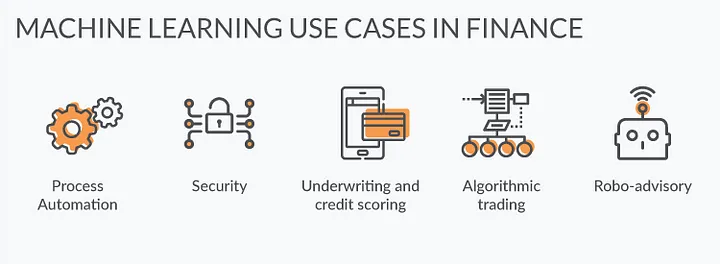
- jaro education
- 30, December 2023
- 9:00 am
The financial industry is involved in the worldwide competition for technological supremacy. Banks, investment firms, insurance companies, and other financial institutions rely heavily on the newest technologies and software, which has made the financial world of today data-driven and highly automated. Among the many technological innovations used in the financial sector, Python and Machine Learning are the most popular forms of programming and automation. Consequently, in this post, we will examine each of those useful applications.
The Professional Certificate Programme in Data Science for Business Decisions at IIM Kozhikode is designed to enhance your proficiency in Python and Machine Learning specifically for applications in the finance sector. This programme reduces the requirement for in-depth coding knowledge by giving professionals a broad knowledge of data science in a business setting. Learners will obtain practical knowledge of using Python and Machine Learning for well-informed decision-making. This Python certification program not only promotes skill development but also gives professionals the strategic thinking necessary to overcome obstacles. Professionals looking to advance their knowledge of data science for business decisions will find the programme to be a valuable resource as it effectively covers gaps between academic knowledge and practical application.
Machine Learning in Finance: Transforming Operations and Insights
Given the vast volumes of sensitive financial information, machine learning systems are designed to adeptly access and analyse extensive datasets, automatically adapting their parameters to optimise user experiences. These computer systems operate seamlessly in the background, generating outputs based on their training.
Machine learning’s precision is particularly evident when dealing with substantial datasets. Take, for example, the massive volumes of data encompassing payments, bills, transactions, customers, and vendors within financial services. Machine learning proves invaluable in extracting accurate insights and predictions, ensuring error-free results. Its capacity to swiftly investigate millions of datasets enhances outcomes without the need for distinct programming. Currently, leading financial services and fintech companies are integrating machine learning into their operations, reaping the benefits of streamlined processes, reduced risks, and optimised portfolios.
Table of Contents
In transaction analysis, machine learning tools excel at providing accurate statistics, delving into even the minutest details. This capability allows for a comprehensive understanding of customer purchase preferences, enabling the creation of distinct customer profiles. Moreover, machine learning facilitates pinpointing optimal selling times for specific goods. Consequently, financial data analysis becomes targeted and refined, empowering financial services firms to gain profound insights into their business and customer dynamics. The amalgamation of machine learning and AI serves as a strategic tool for these entities, fostering effective comprehension and strategic decision-making.

*towardsdatascience.com
About Predictive Analysis
Predictive analysis is a method of forecasting future events with the use of statistical algorithms and historical data. It is useful in the financial sector for forecasting a wide range of variables, including stock prices, market trends, and revenue and earnings. Machine learning is a branch of artificial intelligence that deals with teaching algorithms to learn from data and come to their own conclusions or predictions without explicit programming.
Financial Applications of Machine Learning and Predictive Analytics
Machine learning and predictive analytics have numerous uses in the financial industry. Among the most popular applications are:
- The process of projecting future financial performance from past data is known as financial forecasting. Companies can make better decisions about resource allocation, investment opportunities, and other financial matters by using predictive analytics and machine learning to create more accurate and trustworthy financial forecasts.
- One can identify potential risks and strategies to reduce them can be developed using predictive analytics and machine learning. Algorithms based on machine learning, for instance, can be used to assess credit risk and create more precise credit scores for loan candidates.
- Fraud is a significant issue for many businesses, and it can be challenging to identify and stop. Using predictive analytics and machine learning, you can find patterns and anomalies in financial data that might point to fraud. In order to identify anomalous spending patterns or other signs of fraud you can use machine learning algorithms to evaluate transaction data.
- Overseeing a portfolio of investments to achieve a particular financial objective is known as investment management. Investment strategies can be made more precise and dependable by utilising machine learning and predictive analytics. Algorithms for machine learning, for instance, can be used to examine market trends and spot possible investment opportunities.
Applying Machine Learning to Finance to Improve Risk Management
In the financial sector, managing risks effectively involves recognising, evaluating, and reducing different kinds of risk, such as credit, operational, and market risk. Machine learning shows itself to be a potent instrument that greatly enhances risk management via the channels listed below.
Operational risk
The application of machine learning enables financial institutions to identify and address operational risks. It can specifically identify fraud, system failures, and compliance infractions. The associated algorithms have the ability to identify irregularities in transaction data and alert financial institutions to possible problems.
Credit risk modelling
In this sector, evaluating credit risk is unavoidable. Financial institutions can assess a borrower’s financial information, transaction history, and other relevant factors by using machine learning (ML) models. As a result, they can forecast default odds with greater accuracy than traditional credit scoring models.
Market risks and trends
Machine learning models are useful for forecasting market risks. To create both long- and short-term market forecasts, they can examine news sentiment, past market data, and geopolitical events.
Revolutionising Financial Decision-Making: The Dominance of Python
The role of Python in the financial industry is multifaceted, encompassing algorithmic trading, financial data analysis, risk management, portfolio optimisation, automation, and software development for financial services. Here’s an overview of how Python contributes to these areas:
Portfolio Management and Optimisation
Python-based solutions are employed for portfolio optimisation, constructing efficient frontiers, and selecting assets to minimise risks while maximising returns. Libraries like PyPortfolioOpt and cvxpy aid in creating efficient frontiers and calculating optimal asset allocations. One can utilise Python’s machine learning algorithms for identifying investment opportunities and predicting future trends in the stock market.
Data Visualisation and Financial Data Analysis
Pandas, NumPy, SciPy, IPython Notebook, and Matplotlib are Python’s data science ecosystems that provide powerful tools for financial data processing. It simplifies tasks such as data gathering, cleaning, and preparation for analysis. Quantitative and qualitative financial analysis benefit from Python’s ability to handle large datasets efficiently. Moreover, Python aids in creating visually appealing data visualisations, helping analysts identify patterns, trends, and relationships in complex financial data.
Risk Management
Python is a preferred language for developing robust risk-management systems in the financial sector. Libraries like SciPy offer tools and algorithms for risk modelling, while machine-learning algorithms assist in identifying and predicting fraudulent activities. Python’s capabilities in data analysis are crucial for assessing credit risk, calculating volatility, and running simulations like Monte Carlo simulations.
Algorithmic Trading
The usage of Python in algorithmic trading is extensive. One can automate the execution of trades according to pre-programmed instructions and algorithms. Developers leverage Python to build automated trading bots that analyse real-time market data and make decisions accordingly. Python libraries such as NumPy, Pandas, and Scikit-learn facilitate machine learning for predictive analytics in financial markets. Additionally, Python-based backtesting platforms enable traders to evaluate strategies before implementing them in live trading.
Automation Processes
Automating redundant and manual tasks within the financial sector is a key utility of Python. It offers APIs and libraries for developing automated processes related to data retrieval, analysis, report generation, payment processing, and customer support systems. Python’s versatility simplifies the development of web applications and services, contributing to the automation of various financial tasks.
Software Development for Financial Services
Python is an ideal language for developing secure and scalable financial software applications. It is used for creating online banking solutions, ATM software, payment gateways, financial planning software, and stock market trading platforms. Python enables the development of automated customer care systems, intelligent search engines, and analytics dashboards for real-time monitoring of market trends.
Challenges in Embedding Predictive Analytics and Machine Learning in Financial Operations
While the integration of predictive analytics and machine learning in the field of finance offers substantial advantages, several hurdles impede successful implementation. These challenges encompass:
Data Integrity
There is a link between the precision and dependability of machine learning models within the financial domain to the quality and quantity of the data on which they are trained. Financial data, being often unstructured and laden with noise, may encompass errors or exhibit missing information, posing challenges in extracting meaningful insights. The implementation of robust data cleansing and validation processes becomes imperative to address this issue and guarantee that the data used for training attains high standards of quality.
Security of Financial Data
Financial data, being highly sensitive, demands stringent safeguards against unauthorised access or misuse. This becomes particularly intricate when employing cloud-based predictive analytics and machine learning services.
Talent Deficiency
The execution of predictive analytics and machine learning necessitates a proficient team comprising skilled data scientists, software engineers, and other professionals. Companies may encounter difficulties in both locating and retaining qualified personnel possessing the requisite skills and experience.
Interpretability of Models
Interpreting machine learning models is a complex undertaking, especially in the financial domain. Stakeholders, such as regulators and financial experts, frequently need to know how these models make decisions, particularly in areas where transparency is crucial, like customer credit assessments. The incorporation of Explainable AI (XAI) methodologies is deemed essential in furnishing lucidity and comprehension into the decision-making processes of machine learning models. As a result, the models become easier to understand and the financial ecosystem becomes more reliable.
Legal Compliance
Financial institutions operate in a highly regulated environment, which emphasises how crucial compliance is. Machine learning models need to be compliant with a wide range of financial regulations, an environment renowned for its complexity and regular updates. Specifically designed for the complexities of machine learning applications, tailored compliance solutions are essential. These solutions solve this problem and guarantee that the models meet the necessary requirements.
Strategies for Overcoming Challenges
Data Management
Invest in data management solutions that streamline processes like cleansing, validation, and integration. Establishing robust data governance practices is fundamental for maintaining data quality over time.
Compliance Solutions
Develop specialised compliance solutions tailored for machine learning applications. Regularly audit and update these solutions to align with evolving financial regulations, ensuring transparency and adherence to standards.
Explainable AI
Expand the use of Explainable AI techniques beyond LIME and SHAP. Explore feature importance analysis and model-agnostic explanations for a comprehensive understanding. Provide training to financial professionals to enhance comprehension.
Robust Validation and Testing
Implement rigorous validation and testing processes, including techniques like cross-validation and out-of-sample testing. This helps prevent overfitting and ensures model generalisation under diverse scenarios.
Ethical Considerations
Establish clear ethical guidelines for the use of AI in finance. Regularly review and update these guidelines to address evolving ethical considerations, ensuring fair and unbiased outcomes.
Continuous Monitoring
Institute ongoing monitoring of machine learning models to promptly detect and address issues. Regularly retrain models to adapt to changing financial conditions and regulatory requirements.
By systematically addressing these challenges and implementing the outlined strategies, financial institutions can unlock the full potential of machine learning, fostering transparency, compliance, and trust within the industry.
Conclusion
Python and Machine Learning are powerful and versatile tools for finance, particularly for predictive analytics and risk management. The language’s simplicity, extensive libraries, and robust community support make it an ideal choice for developing sophisticated models that can navigate the complex landscape of financial markets. Through the exploration of various machine learning algorithms, we have witnessed Python’s capability to extract meaningful insights from vast datasets, enabling financial professionals to make informed decisions. The predictive analytics tools discussed have demonstrated their efficacy in forecasting market trends, asset prices, and other critical indicators, empowering financial institutions to stay ahead of the curve.
You can improve your proficiency with Python and Machine Learning in Finance by enrolling in IIM Kozhikode’s Professional Certificate Programme in Data Science for Business Decisions. Through this programme, professionals can benefit from an extensive curriculum and an interactive learning approach with this Python Machine Learning certification programme.








